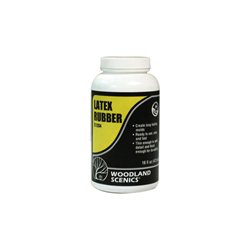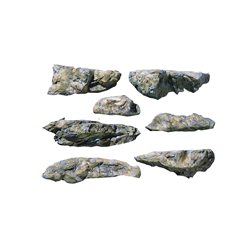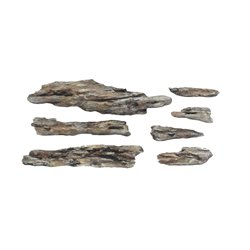Static grass puffer bottles work by manually charging model grass fibres with static electricity. When the charged...
No products
Product successfully added to your shopping cart
There are 0 items in your cart. There is 1 item in your cart.
Search Tips
Can I create my own rock surfaces for my layout or diorama?
One of the most spectacular backdrops to any layout is a rocky gorge or another similar mountainous environment. The sight of a train making its way through a rocky landscape can be a real eye-catcher. The problem then becomes how can we create specific elements for a mountainous or Alpine landscape.
There are a number of different ways to achieve this particular look. Inevitably the landscape is much more significant in size and so a lot more work will go into creating the local geography. In mountainous or rocky settings the landscape dominates. The first step is to ensure that the baseboard has a vertical dimension that can serve as the backbone and support for the landscape. With a vertical support frame in place, we can now examine the options for building the landscape.
Chicken wire is one option that has historically been used by modellers. Not only is it readily available and cheap but it is both strong and flexible meaning that it can easily be shaped into a suitable frame for the landscape. Once the framework is in place the landscape surface can be built. Chicken wire lends itself to a number of techniques including paper mache. At this point, it is a good idea to secure some old newspaper sheets to the frame as this will give the paper mache a surface to bond to, rather than falling through the chicken wire. An alternative to paper mache is to take some old newspaper sheets and cut them into squares approximately 1.5 inches (4 cm) per side. these can then be soaked into a watered-down solution of PVA glue and then place on the frame. The squares should overlap to ensure mutual support and then be laid 2-3 layers deep. Once in place, gentle application of watered-down PVA glue can help the squares bond to each other and the frame.
An alternative to chicken wire is cardboard strips. These can be cut from a suitable cardboard box such as washing powder or breakfast cereal cartons. The strips should be ideally 3/4 inch (20mm) wide and can be secured in place to both the vertical and horizontal baseboard support structure by a staple gun. These strips can then be placed in a vertical and horizontal lattice with frame members approximately 1 inch (25mm) apart to create the framework for the rockface. The landscape can then be built either by paper mache or by the newspaper squares techniques as mentioned above.
Another alternative to the chicken wire and cardboard frame processes mentioned above is to use polystyrene foam. This can either be bought from a hobby shop or utilised from packing materials. It is reasonably sturdy and can easily be shaped by a hobby knife, foam cutter or jig saw. Foam lends itself particularly well to a strong vertical landscape such as an escarpment or ravine. It can be easily and quickly assembled and secured in place by PVA glue. If carefully sculpted it can also form the rock face directly or if preferred, it can be covered with a suitable paste or plaster solution and painted accordingly.
Another option may be to seek inspiration from nature directly and bring a rock face into your layout. Woodland Scenics produce Latex Rubber in a handy 473ml pot. This could then be utilised to create a mould for a suitable rocky surface which can then be used to create suitable surfaces for a layout or diorama. This technique could be the sole means used to create the landscape, or alternatively, it can be used with any of the options mentioned above to integrate a real-world counterpoint into a layout.
Click here to receive the tips weekly in your mailbox. You can unsubscribe at any time.










